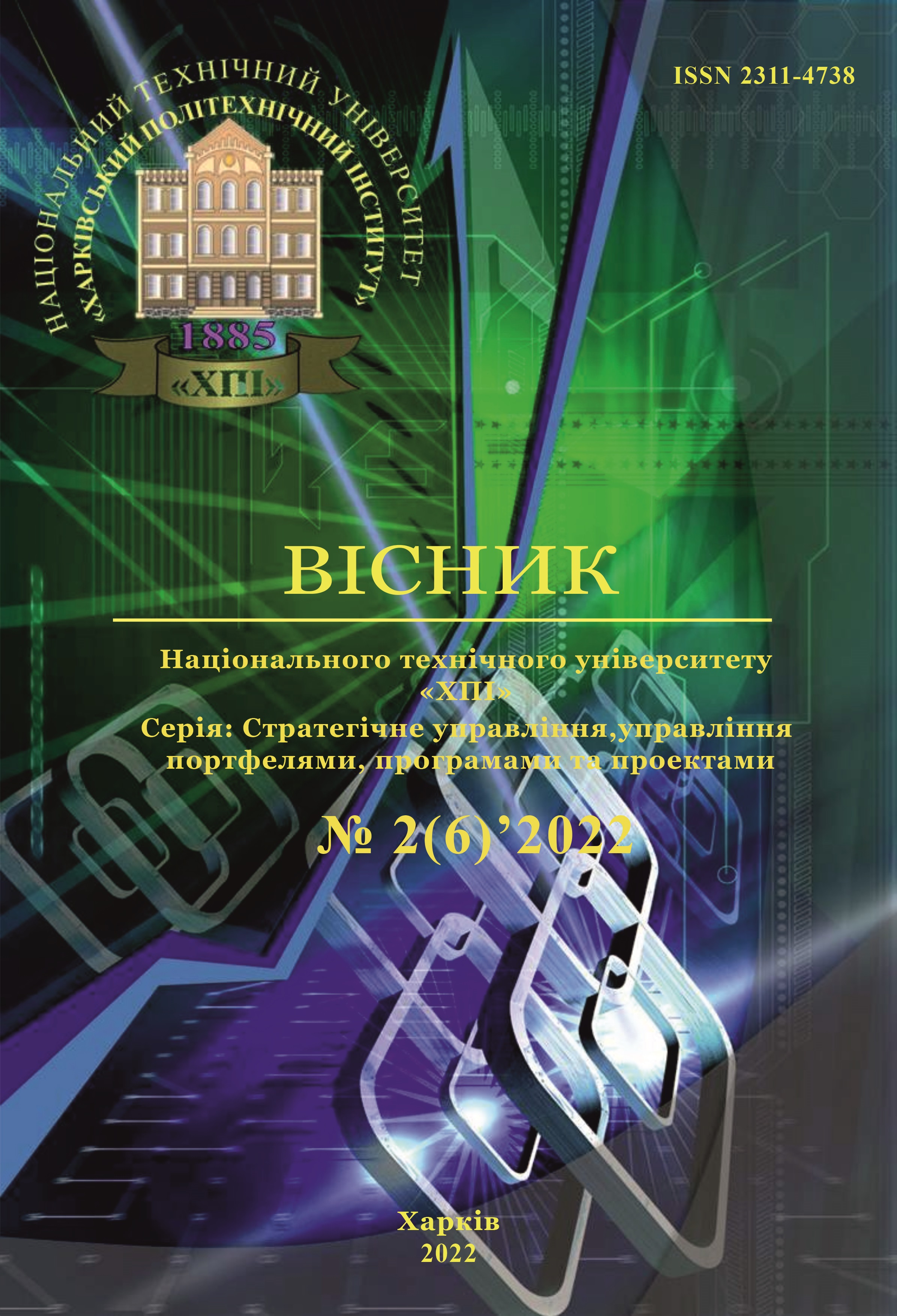TECHNOLOGY OF CHOOSING AN EFFECTIVE METHODOLOGY OF IT PROJECT MANAGEMENT
DOI:
https://doi.org/10.20998/2413-3000.2022.6.2Keywords:
IT projects; IT project management methodology; choice of methodology; technology of choiceAbstract
The dependence of the choice of the optimal IT project management methodology on its successful completion is shown. Choosing a management methodology is one of the first decisions a project manager makes. Each of the existing management methodologies for different types of projects has its own pros and cons. Some are designed for speed of software development, others for full compliance, and still others for creativity and continuous improvement. Choosing the best methodology requires a clear understanding of the positive or negative impact on a particular project. There is no universal methodology, so its choice is made individually for each project, focusing on its goals, scale, complexity, deadlines, professionalism and discipline of the team. This is necessary because some methodologies allow you to speed up development, while others make it more thorough, eliminate the risk of significant problems, errors or product flaws. That is, each management methodology is focused on different aspects and features of projects, therefore, a combination of several methodologies at once is possible. The main objective of the article was to find out to what extent a specific approach meets the goals and characteristics of an IT project. The process of analyzing, evaluating and selecting the appropriate methodology was based on the Organizational Project Management Maturity Model (OPM3), an Organizational Project Management Maturity Model. With this in mind, the analysis of the essence and principles of IT project management methodologies and software product creation has been carried out. The most popular of the existing approaches are considered, their content, history of formation, advantages and disadvantages, as well as areas of application for different types of IT projects are determined. Comparison of these approaches was performed according to the selected criteria. A vision of the formation of an integral assessment of the choice of the optimal methodology for a specific IT project has been formed. To automate the adoption of design decisions on the basis of the proposed integral assessment, a technology was proposed for choosing the optimal methodology for the selected design indicators.
References
Белоусова С., Бессонова И., Гиляревский Руджеро. Введение в программные системы и их разработку. НИУ ВШЭ, 2003
Дацко М., Семенив Г. Анализ моделей жизненного цикла проєктов отрасли информационных технологий. М. : Спектр, 2008. 256 с.
Maturity Model : веб-сайт. URL: https://en.wikipedia.org/wiki/Maturity Model.
Practice guides provide supporting information and instruction to help you apply PMI standards : веб-сайт. URL: https://www.pmi.org/pmbok-guide-standards/practice-guides
Kononenko I., Kharazii A. The methods of selection of the project management methodology. International Journal of Computing. 2014. Vol. 13, No 4. P. 240–247.
Adel Alshamrani. A Comparison Between Three SDLC Models Waterfall Model, Spiral Model, and Incremental. Iterative Model 2009. 36 p.
Kononenko I. V., Lutsenko S. Yu. Method for selection of project management approach based on fuzzy concepts, Bulletin of NTU "KhPI". Series: Strategic management, portfolio, program and project management. Kharkiv: NTU "KhPI", 2017. No. 2 (1224). С. 8–17.
Rational Unified Process. Best Practices for Software. Development Teams. : веб-сайт. URL: http://www.ibm.com/developerworks/rational/library/content /03July/1000/1251 /1251 _bestpractices_TP026B.pdf
Boehm W. Spiral Development: Experience, Principles, and Refinements, 2000.
Чорних Є. А. Agile project management – новый подход в управлении инновационными проєктами. Менеджмент качества. М. : Анги, 2008. 119 с.
Scrum : веб-сайт. URL: https://www.scrum.org/.
Швабер К., Сазерленд Д.. Скрам Гайд. Исчерпывающее руководство по Скраму: Правила игры, 2010
Книберг Х., Скарин М.. Scrum и Kanban: Выжимаем максимум. InfoQ. 2010.
Lean : веб-сайт. URL: https://en.wikipedia.org/wiki/Lean.
Ауэр К., Миллер Р.. Экстремальное программирование. Постановка процессов. СПб.: Питер: 2004
Исикава К. Японские методы управления качеством / скор. Пер. с англ. / Под. Ред. А. В. Гличева. М. : Экономика, 1988. 214 с.
Six Sigma : веб-сайт. URL: https://sixsigma.com.ua/.
Kononenko, I., Lutsenko S. Application of the Project Management Methodology Formation’s Method. Organizacija, Volume 52, Issue 4, 2019. P. 286-308.
Downloads
Published
Issue
Section
License

This work is licensed under a Creative Commons Attribution-NonCommercial-ShareAlike 4.0 International License.
Our journal abides by the Creative Commons copyright rights and permissions for open access journals.
Authors who publish with this journal agree to the following terms:
Authors hold the copyright without restrictions and grant the journal right of first publication with the work simultaneously licensed under a Creative Commons Attribution-NonCommercial-ShareAlike 4.0 International License (CC BY-NC-SA 4.0) that allows others to share the work with an acknowledgement of the work's authorship and initial publication in this journal.
Authors are able to enter into separate, additional contractual arrangements for the non-commercial and non-exclusive distribution of the journal's published version of the work (e.g., post it to an institutional repository or publish it in a book), with an acknowledgement of its initial publication in this journal.
Authors are permitted and encouraged to post their published work online (e.g., in institutional repositories or on their website) as it can lead to productive exchanges, as well as earlier and greater citation of published work.

